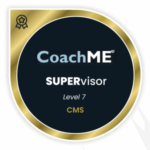I’m delighted to share Part 2 of coaching expert Dr. Relly Nadler’s articles on coaching for high performance with you today. Article appears in Psychology Today, January 2020 and is shared with permission.
In today’s world of increased performance demands, most leaders are underperforming.
One reason is that the leader is focused on the tasks and results, where the people they lead are looking for connection, contribution, and recognition for good work. This is a big disconnect, where the manager’s default is to find fault. They overlook the successes, as those are expected, and don’t take enough time to develop the next-level leaders.
Executive Coaching affords a “forced focus” on development topics, skill-building, and empowerment to help get results. When the leader takes a coaching approach versus a directing style with their direct reports, there tends to be more engagement and better performance. High-engagement companies are more profitable because of increased productivity, lower turnover, and lower healthcare costs. (Zak, 2017)
BlessingWhite (2016), in “The Coaching Conundrum,” states that the top coaching behaviors wanted by direct reports include: 1) Communicating clearly and candidly; 2) Establishing clear performance objectives and milestones; 3) Delivering on promises made; 4) Respecting their ability to make decisions; and 5) Being an advocate for their development and career growth.
A leader receiving coaching can quickly learn these skills and behaviors to better coach their direct reports. Once they experience this, it is easier to use this approach with their team members.
In a previous post, we went through six reasons why leaders need coaching. Here are six more.
1. We don’t think deep or long.
Reflection is becoming a lost art. Leaders are good at fast thinking, but they all need to get better at slow thinking when there is not an emergency. Slow thinking (of the sort described in psychologist Daniel Kahneman’s book, Thinking, Fast and Slow) is defined as the deliberate type of thinking involved in focus, consideration, reasoning, or analysis.
A coach can help you think deeper and longer to help you improve your decision-making by challenging your thinking and mindset. Can you focus on a growth mindset versus a fixed mindset? What would be a proactive response versus a reactive response?
A coach adds clarity to your input about yourself and others and thus enhances your output on your decisions, communications, solutions, and results.
Coaching is a slow thinking process unless there is an emergency. There is always time to check in with your intentions, values, and strengths, and ask yourself and others powerful questions.
Our formula for top performance that we share with leaders is:
Empathy x Insight x Clarity = Top 10% Performance
Empathy is about others, insight is about yourself, and clarity is knowing how best to use this information for good.
2. You need to increase your self-awareness and self-management skills for better performance.
Awareness and self-management are two sides of the coin. How can you manage what you don’t see? Coaching helps raise self-awareness and contributes to your self-management and performance toolbox.
Korn/Ferry searched a total of 6,977 self-assessments from professionals at 486 publicly traded companies to identify the “blind spots” in individuals’ leadership characteristics. They found poor-performing companies’ employees were 79 percent more likely to have lower overall self-awareness than those at firms with robust ROR.
A coach helps you master the moment by putting a spotlight on your inputs about yourself and others, so your outputs, which are your decisions, communication, strategies, and results, are the best they can.
Often a coaching focus is on accepting yourself more in a friendly and kind way rather than a harsh or critical way.
3. You need to build and broaden your strengths and identify derailers.
Whether it is in training or coaching as a leader your first focus is to gain more clarity into your strengths, which is not natural to do on your own. We all have a negativity bias, so when we are on autopilot we go to “what is wrong or could be wrong” as a protective mechanism.
Your coach helps identify your strengths, increase them, use them more, and broaden them to weakness areas. This is often done by holding the strength focus longer when a magnetic pull from the client brings them to focus on their weaknesses. This is another example of “forced focus,” where the coach compels the leader to stay with a strength or what is working.
A variety of assessments and coaching tools help this process of building on your strengths, competencies, and skills.
If a person has some derailers also called “fatal flaws” those must be addressed first and the coach can help to build awareness and management of them. This may involve bringing covert strengths to the derailers that were probably invisible to the client.
4. You are the emotional thermostat, enhance your influence.
Most leaders I have worked have underestimated their influence. This is because they are focused on their tasks and results, while their direct reports are focused more on their contribution and recognition. This is a major disconnect between leaders and followers in their needs and wants from their conversations.
The leader is the emotional thermostat for the team. Their mood is the most contagious. If they are irritated, stressed, and short, other people catch it. If they are optimistic, encouraging, and empathic, so are their team.
Dr. Anthony Grant of Australia and a coaching researcher has found his “clients’ experience that for every executive coached, hundreds of others are positively affected, including their manager, their peers, their direct reports, and those employees’ direct reports as well. This extends to hundreds of people, and even more if one counts customers.”
In Helping People Change, Richard Boyatzis, Melvin Smith, and Ellen van Oosten state “…given the role of emotional contagion, being able to effectively manage the emotional tone of the coaching discussion also requires having an awareness of one’s own emotions and recognizing the impact that they can have on the person being coached.”
What are you sending out to your team that they are catching? Optimism or pessimism, challenge or threat, proactive or reactive, slow thinking or fast thinking? If you are calm, cool, and rational, they will be too.
5. Your sense of power leads to less empathy.
Dacher Keltner, a psychology professor at UC Berkeley, speaks and writes about the power paradox: Once we have it, we lose the capacities we used to gain it.
Sukhvinder Obhi, a neuroscientist at McMaster University in Ontario, recently found a similar phenomenon. While Keltner studies behaviors, Obhi studies brains. In his experiments, he had people who were powerful and others not so powerful under a transcranial-magnetic-stimulation machine. He found that having power, in fact, impairs a specific neural process, “mirroring,” that may be a cornerstone of empathy.
This may explain the neurological basis to what Keltner has termed the “power paradox”: Once we have power, we lose some of the capacities we needed to gain it in the first place.
Leaders with power end up thinking they know what is needed in almost every situation and don’t need to hear from others. They think they are the “smartest person in the room.” They value their ideas over all others. Keltner calls this an “empathy deficit.”
6. You are creating your leadership legacy.
A coach can help you with slow thinking by spending quality time having conversations about how you are developing each of your direct reports uniquely. This in turn prepares you for quality conversations and coaching with your people.
A leader’s focus is usually on getting results. Having a coach compels you in a “forced focus” to focus more on developing your team and emerging leaders.
This where the leader can have their greatest legacy. The best practices of their leadership can be passed down to their direct reports and their direct reports after they are long gone. Leaders impact all their people, their families, and can increase their life quality.
A 2013 study by Anthony Grant found that executives who received coaching experienced effects that transferred over into the executives’ family life, including heightened work-life balance and improved relationships with family members.
Your direct reports expectations of your coaching include:
1) Communicating clearly and candidly; 2) Establishing clear performance objectives and milestones; 3) Delivering on promises made; 4) Respecting their ability to make decisions; and 5) Being an advocate for their development and career growth. (BlessingWhite, 2016)
That means you can’t take short cuts to deliver on their hopes and expectancies. You need focused time to think deeply and slowly and that is best done with an experienced coach to act as a thinking partner with you and for you.














Leave a Reply